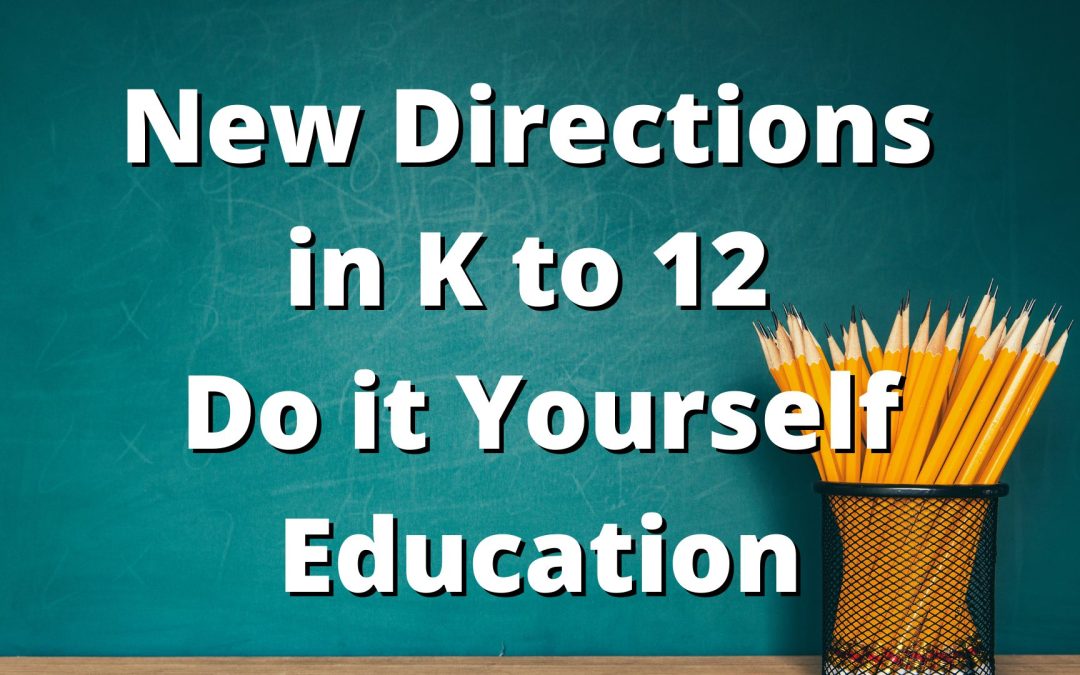Homeschooling has been legal in the United States since 1953. Some states have more restrictive regulations and accountability requirements than others, but the home school option is available in all 50 states. (NOTE: for a summary of homeschool laws for all 50 states, visit www.homeschoolfacts.com .)
Over the past 65 years, homeschooling has evolved from families engaging mentors to individually tutor their children, until the early 1900s when the number of homeschoolers dropped off rather dramatically as middle-class America began to move their children into tax-supported public schools.
The modern homeschooling movement began in the 1970s when some education theorists supported the idea that public schools were creating an “oppressive” environment that was training children to be “automatons” who would make good employees for U.S. corporations. This idea appealed to certain populations that had chosen to “live off the grid,” defy authority, and create new social structures within the commonly accepted American way of life. For some time, the homeschool population consisted largely of students whose parents were seen as either hippies or religious zealots who wanted to keep their children focused on a solely Bible-based curriculum.
Fast forward to 2022 and what is beginning to look like “the other side” of a worldwide pandemic when the huge majority of U.S. K to 12-aged children ended up in a homeschool or “school-at-home” education mode. The result now appears to be that a significant percentage of parents whose children were required to move to a homeschool model are now electing to keep those same kids at home in a “Do It Yourself” education atmosphere.
NEW DIRECTIONS
For the most part, homeschool curriculum has been focused on transferring the public education model into a home classroom atmosphere. Sometimes using the same books, same lesson plans and the same modeling approaches used by public schools. With the advent of technical innovations in the K to 12 education world, parents began to branch out into new and often innovative approaches that included the use of computers, online classes, and widely available software options for all grade levels.
In the current decade, numerous “new directions” have emerged in the homeschooling world. Many of these ideas include giving homeschool students the opportunity to participate in creating their own curricula and a chance to branch out into the actual work world via apprenticeships and internships. This article is focused on three of these “new directions” with the intent of motivating homeschool parents to “tweak” their idea of homeschooling to better accommodate the individual needs of their K to 12 age students.
- The Maker Movement – Any dedicated homeschool parent recognizes this as a direction that has been around for some time. The Maker Movement is focused on a do-it-yourself thought process that includes accessing learned people from a wide variety of business, art, music, and artisanal pursuits and use their expertise in creating hands-on learning projects to supplement K to 12 education programs.
What’s new about it is the fact that the approach is enjoying a resurgence of interest in the “new normal” world of the 2010s and 2020s. Because the model encourages out-of-classroom experiences, it has unique potential for adaptability to a homeschool atmosphere.
In June 2016, an Education Week Special Report announced that “The maker movement is going mainstream, migrating from museums, garages, and informal ‘faires’ into the highly regulated world of K-12 education. For fans of hands-on, student-driven learning, the shift presents an opportunity to breathe fresh life into old teaching philosophies.” (https://www.edweek.org/education-industry/the-maker-movement-is-coming-to-k-12-can-schools-get-it-right/2016/06#:~:text=The%20maker%20movement%20is%20going%20mainstream%2C%20migrating%20from,to%20breathe%20fresh%20life%20into%20old%20teaching%20philosophies. )
More recently, Abigail Konopasky and Kimberly Sheridan, writing for DOI.org on July 30, 2020, do a great job of describing the Maker Movement and conclude that “Maker education is often framed as a reaction to more traditional educational approaches and frequently involves the incorporation of making into STEM (science, technology, engineering and math) and STEAM (science, technology, engineering, art and math) approaches.” (https://doi.org/10.1093/acrefore/9780190264093.013.312)
- Flipped Learning – Putting aside references to “secondary education pedagogy,” “constructivist theory,” and other difficult-to-wade-through theoretical interpretations of flipped learning, the simple and direct definition is: a study arrangement where kids watch topical lectures before class so they can spend classroom time working on actual learning experiences including discussions, students-teaching-students, presentations, projects, etc.
To dispel some of the wrong ideas about this term, leaders of the Flipped Learning Network (FLN) use a standardized definition of the term that can be found on the FLN website at https://www.flippedlearning.org/wpcontent/uploads/2016/07/FLIP_handout_FNL_Web.pdf.
EdSurge contributor, Robert Talbert, provides a simple, direction definition (April 2, 2021) – “A common and oversimplified answer is that it is an approach that asks students to watch lecture videos at home before class so that class time can be used for more interactive activities.
Patricia Roehling and Carrie Bredow writing on September 28, 2021, for the Brown Center at Brookings, endorse flipped learning as a useful approach to homeschooling: “Most parents embracing the idea of homeschooling their children are introduced to the concept and idea of a flipped learning environment in which, students are taught in a not-so-obvious approach to learning. As a result, flipped learning is considered as an important and prominent booster to self-initiated learning and homeschooling.” (https://www.brookings.edu/blog/brown-center-chalkboard/2021/09/28/flipped-learning-what-is-it-and-when-is-it-effective/)
- Micro-schools – As an alternative to every day, in-classroom homeschooling, some parents have tried an adaptation of the popular “Micro-school” concept where small groups of mixed age students (5 to 10 students) from several homeschools, with no grade-level differentiation, get together for a more unstructured learning experience. In this situation, the homeschool teacher does not function as a formal “teacher,” but functions more as a mentor or coach who is in the room to guide students to a better educational outcome.
In a Micro-school atmosphere, students are empowered to personalize their own educations and are held accountable for their own progress. Micro-schools are particularly adaptable to being run out of homes. The “school” can be focused on particular topics or education “niches” and operate just part of the school day – inviting other homeschoolers in for a specific lesson section.
CONCLUSION
Homeschooling is growing fast in the U.S. To accommodate the burgeoning interest level and to ensure homeschooled students are receiving the best possible experience available, homeschool educators will have to move away from the old-fashioned mode of teaching what the public school offers and using public school teaching methods and classroom models. The current homeschooling trend is pushing both public schools and homeschool educators to try new things. This atmosphere of innovation will likely benefit the U.S. education system as a whole, perhaps producing interesting public school/homeschool collaborations that could energize currently lackluster U.S. K to 12 education approaches.

